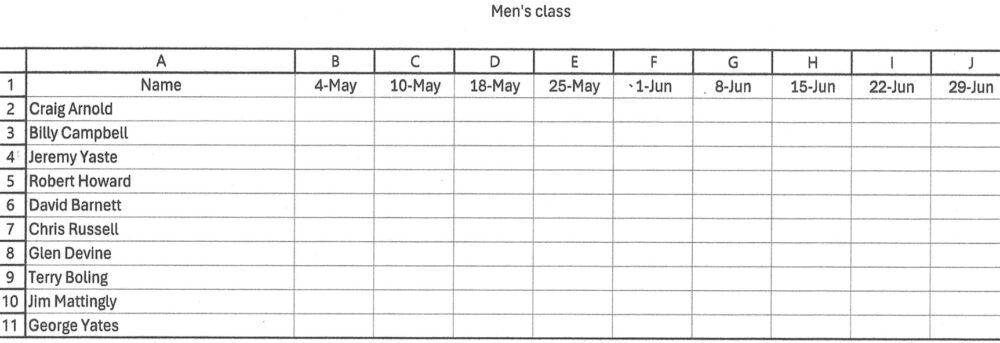“The key ingredient for improvement and success is not knowledge or resources. The key ingredient is the health of the organizational environment.”[i]
Bryan Houser, was called to consult with a small non-profit organization named Helping Hands. Helping Hands was organized to assist people of all cultures, ages, and income levels in their region. However, it seemed they were only reaching one segment of the population and very few of those. The organization had hired and dismissed three leaders in the last six years. The board of directors for Helping Hands decided to call Bryan Houser when one board member had heard of Bryan’s experience with a similar organization.
Bryan had requested and studied the history and financial records for Helping Hands prior to his first meeting with the board of directors. In the first meeting Bryan listened as various board members recanted their version of the Helping Hands story. Some painted a wonderful portrait of the early days of the organization, only to have fallen in the last three to four years. While others focused on the recent troubled years of the organization.
According to board members, six years ago, they had hired Ron Settles, who came highly recommended with a doctorate degree and a successful track record. Well, actually, he had only been with one company but it was a success in its field of business. “Ron brought great leadership skills,” said one board member. A couple other board members nodded, but several grimaced, as if to say, “not really.” Twenty-two months into his time with Helping Hands, the company not only was not making progress, it had actually lost revenue and clientele – greater losses than the organization had ever experienced. The board dismissed Ron Settles from his duties and began the search for a new president to run the organization.
Three months later Larry ToDegrees was hired to fill the position. Larry had two Master’s degrees, in Business Management. The board members recanted how Mr. ToDegrees was very well educated, he was not a people person. “He very seldom came out of his office and was somewhat difficult to work with.” The organization continued its downhill roll. Larry ToDegrees was dismissed within ten months of his hire date.
The third man hired to run the organization was Billy Noseright. This candidate came with both education and experience. Mr. Noseright had a Master’s degree in Business and had been with five companies, similar in concept to Helping Hands. As president of Helping Hands, Billy Noseright attempted to install similar practices he had employed in some of his previous positions. The major difference was this was a non-profit organization that operated mainly with volunteers and a slim budget. “Mr. Noseright just did not know as much as he thought – at least about non-profits.” Quipped one of the board members.
Bryan Houser listened as various board members passionately spoke, sometimes on top of each other, about the organization. After forty-five minutes of conversation the chairman of the board looked to Bryan and said, “Well, you’ve heard quite a bit.” To which Bryan nodded once then tilted his head right to left in a slight upward fashion. “Yes, I have.” He stated.
“What are your first impressions, or your thoughts at this point?” Queried the chairman.
Bryan sat quietly for ten very long seconds with his eyes focused on the pad in front of him on which he had been taking notes. Raising his head slowly, Bryan panned the room making eye contact with each man individually before moving on to the next. Fixing his gaze momentarily on the chairman, Bryan stated, “I’ve studied your history before today, and I’ve talked to people in your community. What I have learned studying those materials and what you have shared today,” his gaze now begins to pan the room again. He continued, “I do not believe yours is a leadership issue so much as an organizational health issue. Could the reason your last three choices of leaders have not been successful be because you have not lined up the leader’s strengths with the health of the organization?”
Several of the men in the room looked perplexed. The chairman asked, “I’m not sure we understand.” Several men in the room nodded in agreement.
Bryan attempted to explain, “It sounds like you pride yourself on getting well educated men, some with successful experience, some not. Those requisites are fine, but if they do not line up with the health inside your organization, it is not likely to improve the health of the organization. Copying practices from one organization to another rarely works well. Helping Hands has seen declining trends for nearly ten years. You need not focus so much on education in a leader as you do someone with compassionate people skills and the desire to get in the trenches with your volunteers to rebuild a healthy organization.”
Most organizations, churches included, focus on intelligence rather than health of the organization. – A healthy organization will inevitably gain intelligence over time.
People in a healthy organization learn from one another. Healthy organizations learn to identify critical issues and recover quickly from mistakes. Healthy organizations cycle through issues and situations and rally around solutions much faster than their dysfunctional counterparts.[ii]
For more information on Organizational Health for your church or other organization, contact George Yates and visit SonC.A.R.E. Ministries.
[i] Patrick Lencioni, The Advantage, 2012,
[ii] Adapted from The Advantage, Patrick Lencioni, 2012
